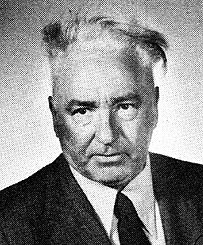Wilhelm Reich biography from Twentieth Century Authors
H.W. Wilson Company - Fourth Printing, 1967
*REICH, WILHELM (March 24, 1897- ), the father of "Orgonomy . . . the science of cosmic Orgone Energy," for years a storm center in the combined fields of psychotherapy and biophysics, was born in Austria, the son of a well-to-do farmer. A childhood spent on his father's farm, close to the natural rhythms of plant and animal breeding, reinforced his later, adult insistence upon the unitary nature of all being and of the strictly biological and sexual bases of man's emotional life.
After obtaining his M.D. from the University of Vienna in 1922, Dr. Reich undertook postgraduate work in neuropsychiatry. Vienna was in the early 1920's experiencing the tumultuous birth pangs of the new science of psychoanalysis. Dr. Reich early identified himself with this movement; in 1920 he attained membership in the Vienna Psychoanalytic Society, under Sigmund Freud. He was Freud's first clinical assistant at the Psychoanalytic Polyclinic from its foundation in 1922 until 1928; and was subsequently closely identified with other psychoanalytic centers. From 1927 through 1930, Wilhelm Reich wrote and lectured extensively on the social origin of the neuroses at mental hygiene centers in Vienna, and continued this work in Berlin until the rise of Hitler forced him to flee Germany in 1933. One product of his early thinking along the lines of sex reform was his book The Sexual Revolution (English edition). In 1946 the first English translation of his Mass Psychology of Fascism (1933) appeared.
After 1934 it was apparent that Reich was no longer moving with the mainstream of psychoanalysis; and he was excluded from the International Psychoanalytic Association. He was later invited by the Norwegian association to re-enter, but refused to do so. However, much of his early work has by now been at least partly absorbed, like the ideas developed in his book Character Analysis, in which the rigidity and blockings of the neurotic character were shown to be reflected in the body in various types of spasms and muscular armoring.
In Denmark, where he first settled in his flight from Germany, and later in Norway, Dr. Reich lectured on the need for greater sexual freedom and continued his experimental work on the bio-electrical nature of sexual impulses; and he has elaborated and extended the scope of these studies since coming to the United States in 1939. For the first two years after arriving in this country he lectured at the New School and established an Orgone Energy Laboratory at Forest Hills, N.Y. This laboratory now has a permanent home in "Orgonon," in the Rangeley Lakes district of Maine.
The Function of the Orgasm contains the heart of Dr. Reich's theories of "orgastic potency." In this book, he pursues the idea that the ability to experience a complete sexual orgasm, and the resulting release from nervous tension, is always lacking in neurotic individuals (i.e., nearly everybody brought up in contemporary "repressive" cultures). The healing of neurotics is to be accomplished by substituting for the "character armoring" that constricts them an un-neurotic set of traits known as the "genital character." The necessity of not repressing childhood sexuality is stressed as a means of preventing neuroses in future generations.
The Cancer Biopathy (1948) carries on the experimental work on "orgone energy," the basic form of "primordial cosmic energy," which permeates the universe and governs all living matter. Re-charged in the individual at the moment of orgasm, the stasis of orgone energy results in a host of diseases which afflict modern man, including, notably, cancer. On the social level, the failure to achieve the genital character results in "emotional plague," a wide range of destructive tendencies culminating in totalitarianism and nuclear warfare (cf. his Listen, Little Man!, 1948).
Any further attempts to present the impact of Dr. Reich's writings must refer to the special, highly private vocabulary he has evolved with his "new science of Orgonomy." Whether, as adverse critics have maintained, this consists in an attempt to pour old wine into new scientific test-tubes, or whether a fresh modulation of contemporary vocabulary is really necessary in order for new scientific concepts to assert themselves (as the word "libido," "id," "repression," accompanied Freud's explorations into man's nature) is only one example of the type of problems that Dr. Reich's controversial work awakens.
Dr. Reich is powerful-looking with a thatch of white hair and the massive shoulders of a man who has done physical labor in his youth.PRINCIPAL WORKS IN ENGLISH TRANSLATION: The Sexual Revolution, 1945; The Function of the Orgasm (revised ed.) 1948; The Cancer Biopathy, 1948; Listen, Little Man! 1948; Character Analysis (revised ed.) 1949; Ether, God and Devil, 1951; The Oranur Experiment, 1951; Cosmic Superimposition, 1951.
ABOUT: Fenichel, O. The Psychoanalytic Theory of Neurosis; Fliess, R. The Psychoanalytic Reader, 1948; Bibliography on Orgonomy 1920-52 (Orgone Institute Press) 1953; New Republic May 26, 1947; New York Post Magazine September 5, 1954.
Note: For comprehensive information, the reader is referred to the Orgone Institute Press, Rangeley, Me., publishing house of the Wilhelm Reich Foundation, which is preparing extensive biographical material on Wilhelm Reich's life and work.
*rike
Home
